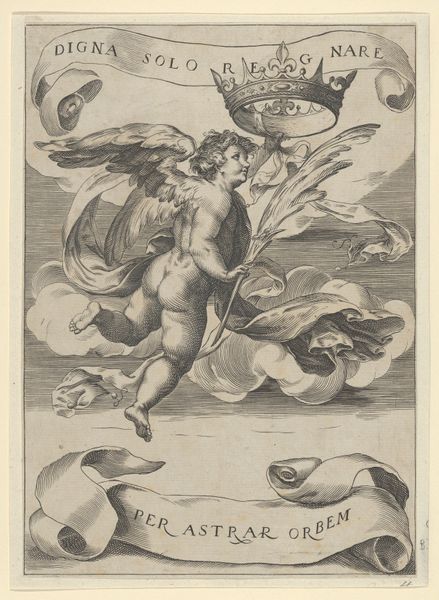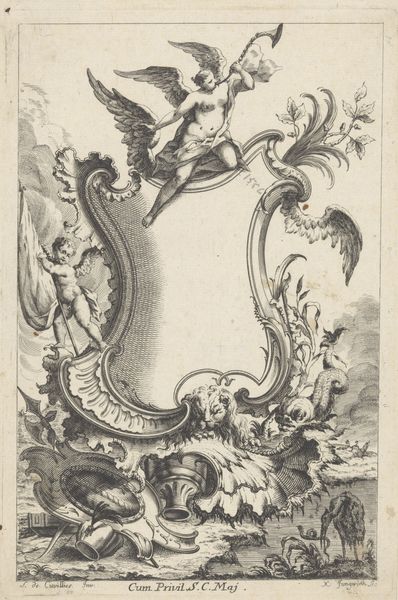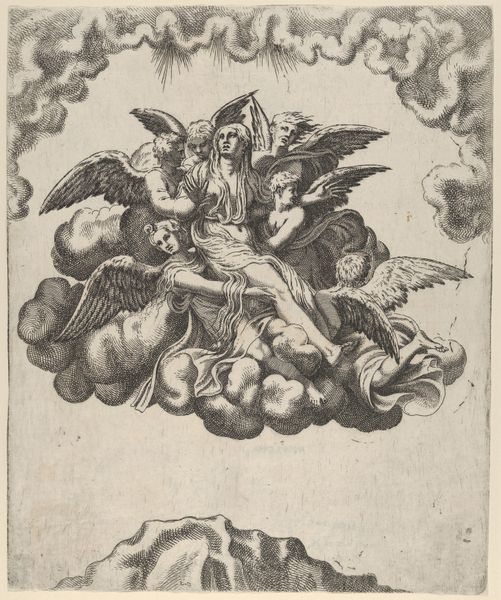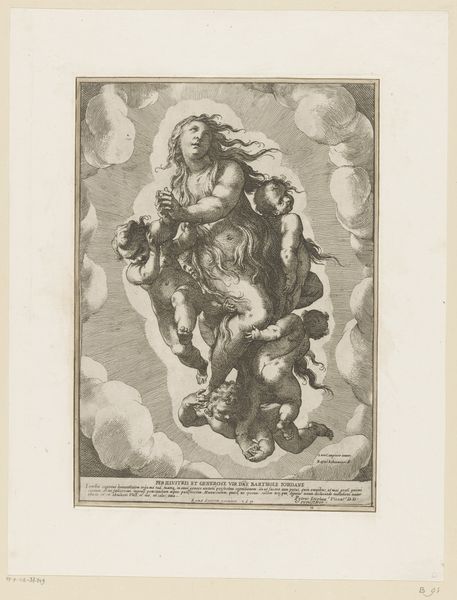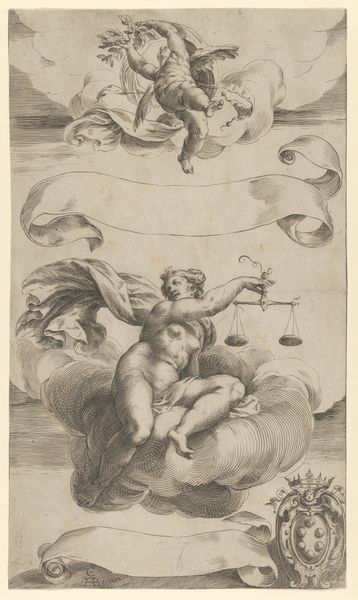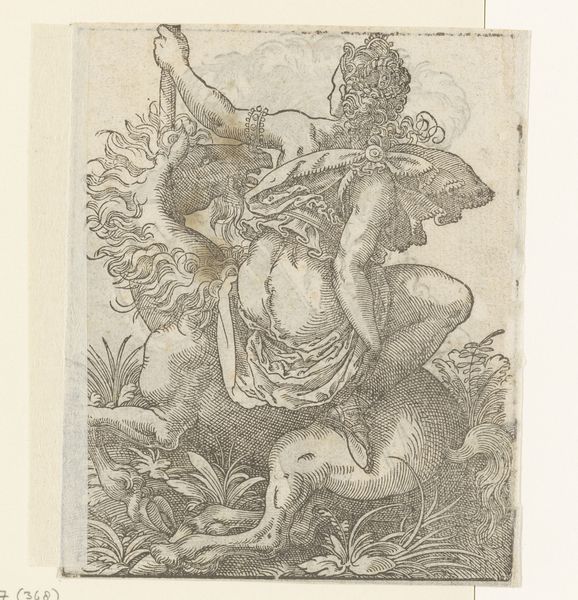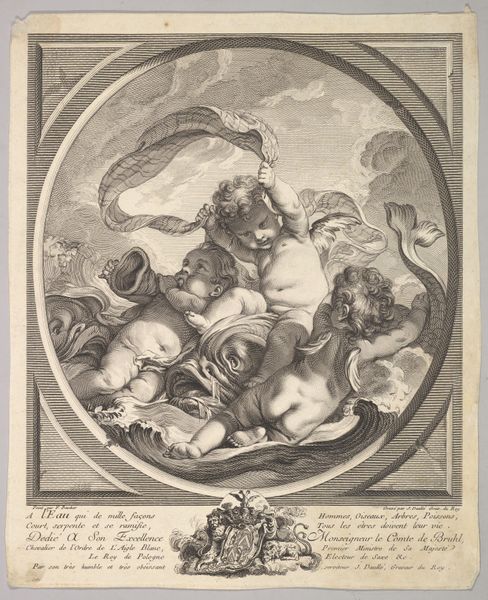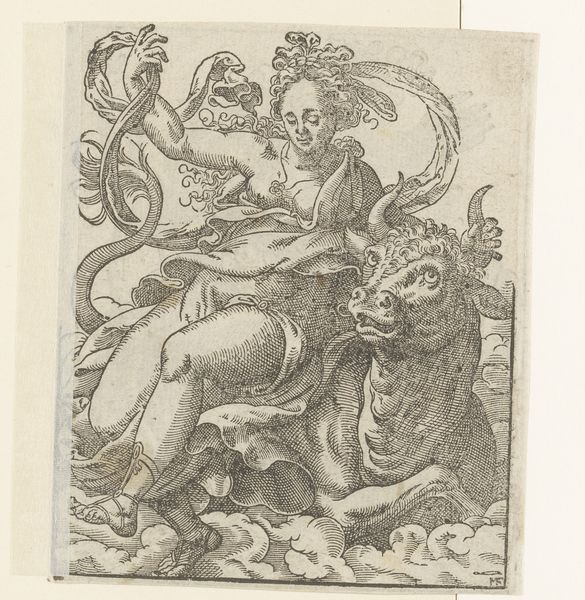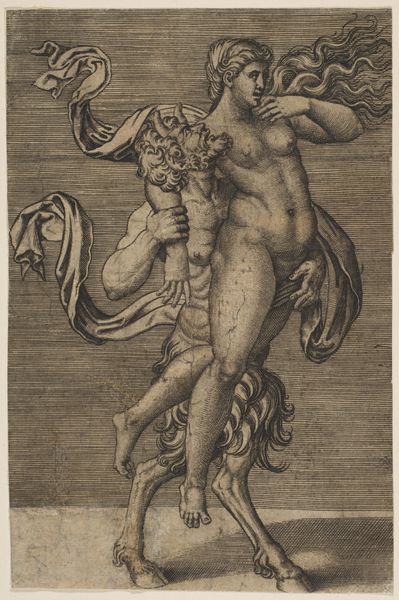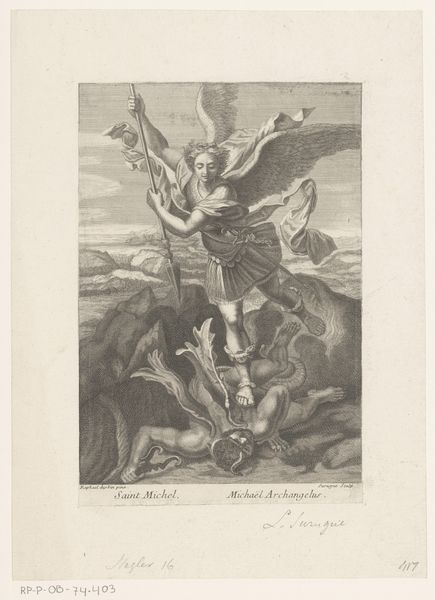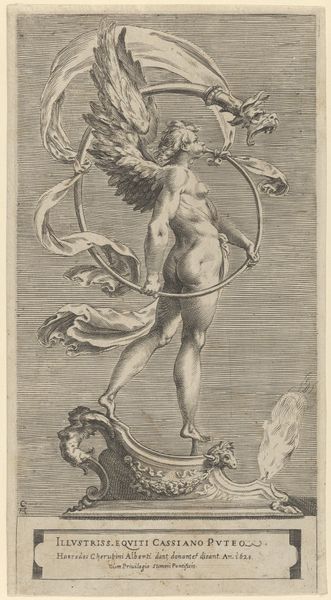
Winged putto holding a cardinal's hat over a dragon head 1620 - 1700
0:00
0:00
drawing, print, engraving
#
drawing
#
allegory
#
baroque
# print
#
figuration
#
line
#
italian-renaissance
#
engraving
Dimensions: Sheet: 9 1/16 × 6 5/16 in. (23 × 16 cm)
Copyright: Public Domain
Curator: Welcome. We are looking at a baroque engraving from between 1620 and 1700, "Winged putto holding a cardinal's hat over a dragon head", attributed to Cherubino Alberti and now held at the Metropolitan Museum of Art. What strikes you most about it? Editor: The frenetic energy. There’s so much dynamism packed into such a small pictorial space! I’m intrigued by how Alberti uses such a graphic, linear medium to convey this sense of explosive, almost unstable action. Curator: Note the way the composition spirals. Alberti uses the strong diagonals created by the putto's body and wings, and then mirrors this in the serpent below, giving an overall sense of implied motion. He manipulates this relatively static medium, engraving, to create dynamic tension. Editor: Yes, and consider the labor invested in producing this print, a mechanically reproducible image intended, one assumes, for a wider audience. An interesting juxtaposition, this emblem of aristocratic power reproduced through a painstaking and demanding artisanal process. Who do you think comprised this audience, generally speaking? Curator: It's an interesting point you raise, certainly. One could read this, then, through the lens of semiotics. The dragon, for instance, often representing evil or chaos, is dominated here, subjugated by the cherubic form and overshadowed by the cardinal's hat – signs of faith and hierarchical power. Editor: It really underscores the inherent tension within art of this period: lavish displays of power and opulence created often through the intensive labour of skilled artisans, whose names frequently vanish in the historical record. Curator: We can interpret this as Alberti exploring themes of virtue triumphing over vice. He’s using recognizable iconographic language—a visual shorthand—that speaks directly to an educated viewer familiar with classical and Christian symbolism. Editor: So much rich information packed into the physical object itself. From the labor of the engraver to the hierarchical imagery represented, the making and its material certainly have a great deal to say. Curator: Indeed, a work steeped in its era, both technically masterful and narratively complex. Editor: Definitely one for reflection, as it's about skill and artistry and social forces and relationships of power all at once.
Comments
No comments
Be the first to comment and join the conversation on the ultimate creative platform.
